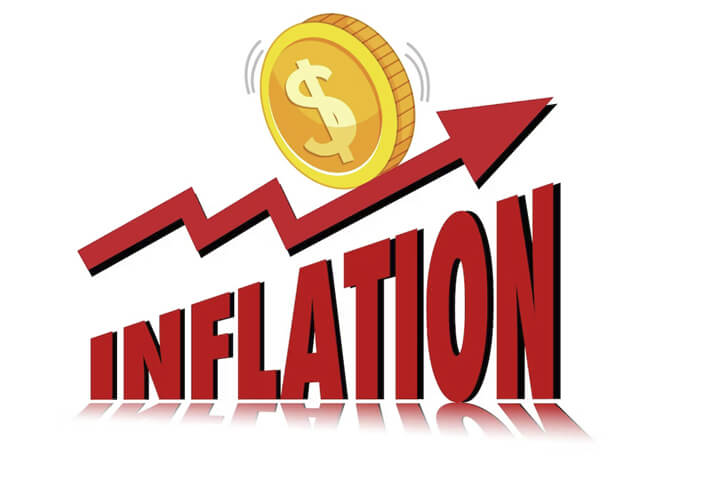
Agri-inflation in Namibia witnessed a significant drop to 8.7% in the first quarter of 2023, slowing down from the previous year’s levels above 15%. This encouraging news comes from the First Quarter AgriReview 2023, compiled by Bertha Xulu, a researcher at the Namibia Agricultural Union (NAU). The decrease in agricultural input prices brings relief to local farmers who have been burdened by high costs. However, the report highlights that prices of urea and phosphate have stubbornly risen by 26.8% and 21.8% respectively by the end of the first quarter, compared to the previous year.
Urea and phosphate are vital components in the agricultural sector, and their prices and availability directly impact agricultural output. Phosphate plays a critical role in fertilizers, while urea serves as both a fertilizer and an animal feed additive. Meanwhile, fuel is essential for agricultural machinery, equipment, and electricity generation required for various farming activities such as water pumping and irrigation. In the context of local agri-inflation, the decline in fuel prices has been the primary driving force behind the downward trend. Diesel prices dropped by one cent between Q1 2022 and Q1 2023, in stark contrast to the increase of over 57.6% witnessed from Q1 2021 to Q1 2022.
Petrol prices, on the other hand, rose by a mere 1.3% between Q1 2022 and Q1 2023, compared to the significant 49.3% hike observed between Q1 2021 and Q1 2022. This led to a remarkable dip in fuel cost inflation, plummeting from 53.5% in Q1 2022 to below 1% in Q1 2023, as revealed by the NAU review. Xulu emphasized that internationally and in South Africa, there have been substantial year-on-year price reductions. Urea and phosphate prices fell by 43.4% and 18.3% respectively internationally, and by 30.0% and 10% in South Africa when comparing Q1 2023 with Q1 2022. Surprisingly, in Namibia, urea and phosphate prices have failed to follow international trends, rising by 26.8% and 21.8% respectively.
Yellow maize, another critical input in animal feed, experienced a 32.8% year-on-year price increase. The prices of agri-inputs can be further influenced by the exchange rate, especially since many of these inputs are imported into the country. Xulu’s assessment in the review revealed that most exchange rates increased year-on-year, with the US dollar strengthening by 16.5% against the Namibian dollar. Consequently, local producers continue to bear the burden of high costs for imported inputs.
According to the analysis conducted by the South African Futures Exchange (SAFEX), the average prices for yellow maize and soybeans rose by 11.7% and 10.2% respectively from Q1 2022 to Q1 2023, albeit at a slower rate from Q4 2022 to Q1 2023. Xulu further suggests that any further downward adjustments in yellow maize prices for the rest of 2023 may be marginal due to the anticipated rise in global demand for the grain, driven by projected shortages in the Northern Hemisphere. The review also indicates that local prices for most feed inputs are showing a downward trend in Q2 2023.
Meanwhile, in the livestock sector, the Quarterly Review highlights that input costs increased by 33.5% between Q1 2020 and Q1 2023, surpassing the percentage increase in producer prices. Farmers not only face inflation in input costs but also have borrowed capital through various channels, which they must repay at the existing prime rate. The substantial increase in the repo rate from 3.92% in Q1 2022 to 6.92% in Q1 2023 (currently at 7.75%) resulted in a surge in average lending (prime) rates from 7.50% in Q1 2022 to 10.67% in Q1 2023, as explained by Xulu in the Quarterly Review. Given the slight increase in loans from N$7.14 billion in June 2021 to N$7.21 billion in June 2022, accessing necessary capital in the agricultural sector has become a challenge.
As farming becomes increasingly capital-intensive, driven by the need for innovation to improve yield and output amidst climate change, access to capital becomes a crucial factor. In comparison, the average annual inflation rate in Namibia stood at 7.1% for Q1 2023, compared to 4.5% recorded during the same period in 2022. Agri-inflation, however, was recorded at 8.7%. Food and non-alcoholic beverages accounted for 16.5% of the consumer price basket. Average food inflation alone stood at 14.6% in Q1 2023, a significant increase from 5.3% in Q1 2022. Notably, substantial price increases occurred in fruits (26.1%), bread and cereals (21.7%), vegetables including potatoes and other tubers (13.4%), as well as sugar, jam, honey, syrups, chocolate, and confectionery (12.9%). It is worth noting that most food and fruit items are imported due to low local production, and the same applies to bread and cereals, where most of the wheat and maize grains are also imported. The spike in prices across various food categories during Q1 2023 has negatively impacted consumer purchasing power, consequently affecting demand for produce, as observed by Xulu. High food inflation and electricity costs have weakened consumer demand for red meat in South Africa, a trend that is also reflected locally in weaner prices.
Stay updated with the latest farming tips and agriculture industry news from Africa by subscribing to our newsletter. Don’t miss out on valuable insights and updates. Follow us on Twitter, LinkedIn, and Facebook to join our farming community and stay connected with us.



















